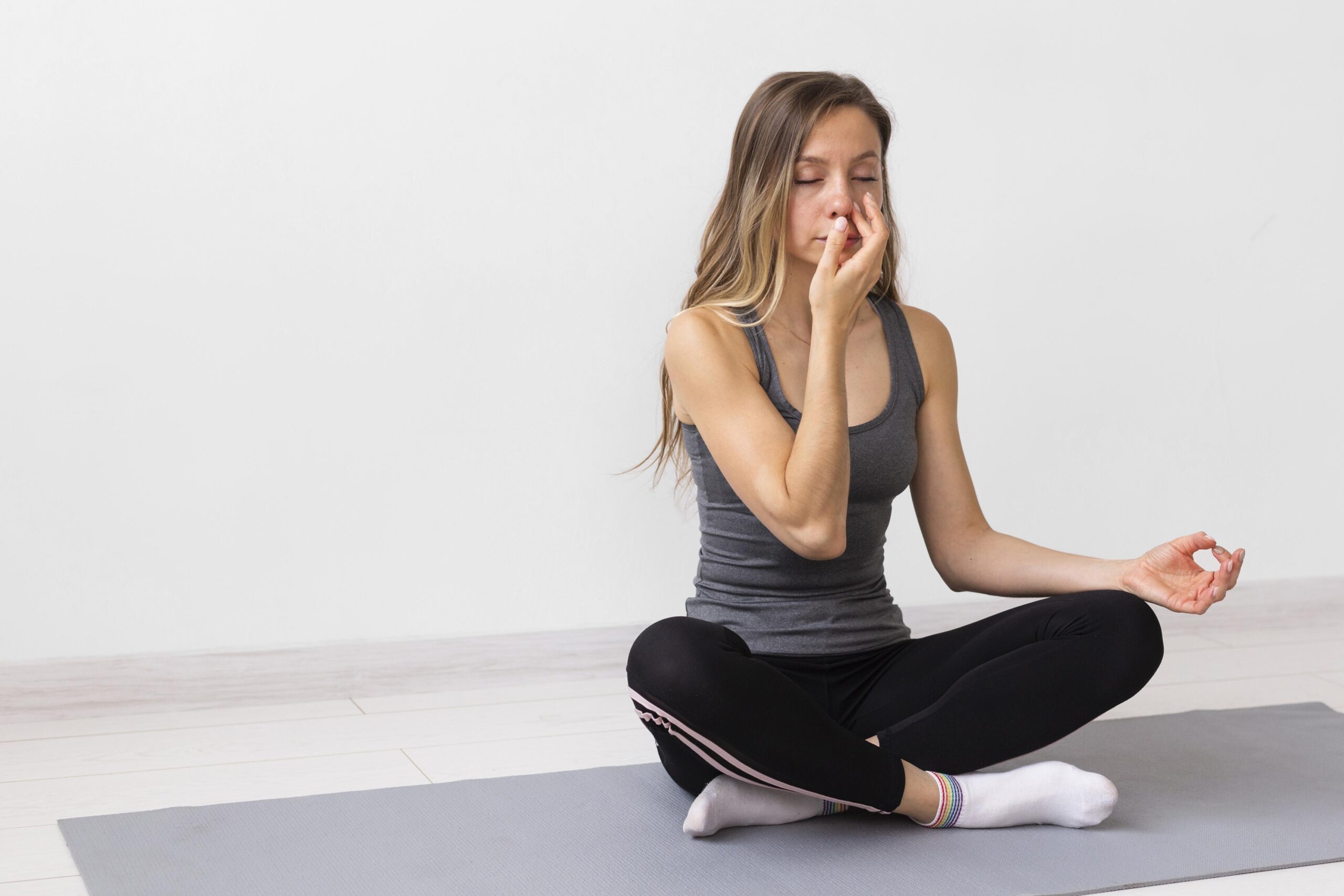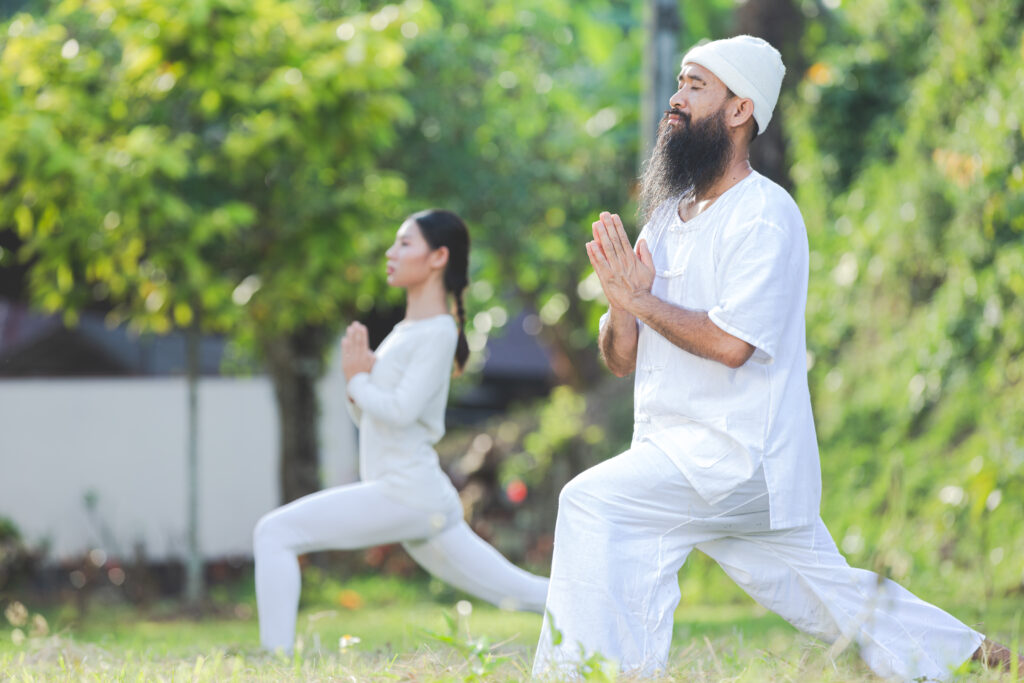
Introduction
Pranayama, the ancient practice of breath control, is a powerful tool for nurturing both physical and mental well-being. Originating from the yogic traditions of India, pranayama helps us connect with our breath, calm our minds, and energize our bodies. Adding a few minutes of pranayama to your daily routine can improve focus, reduce stress, and even boost immunity.
If you’re new to pranayama or looking to deepen your practice, here are five essential pranayama techniques that can bring more balance, peace, and vitality into your life.
1. Kapalabhati (Skull-Shining Breath)
Description: Kapalabhati, often called the “Skull-Shining Breath,” is an energizing technique that involves a series of powerful exhales followed by passive inhales. This breathwork stimulates the mind and revitalizes the body.
Benefits:
- Increases energy and clears the mind.
- Detoxifies the respiratory system.
- Boosts circulation and improves digestion.
How to Practice:
- Sit in a comfortable, upright position with your hands on your knees.
- Inhale deeply through your nose.
- Exhale forcefully through the nose, pulling your navel toward the spine with each exhale.
- Continue with quick exhales and passive inhales for 1 minute, then relax and breathe normally.
2. Anulom Vilom (Alternate Nostril Breathing)
Description: This calming technique, also known as Nadi Shodhana, is a wonderful practice for reducing anxiety and balancing the nervous system. Anulom Vilom involves alternating the breath between nostrils, promoting balance between the left and right sides of the brain.
Benefits:
- Calms the nervous system and reduces stress.
- Balances energy levels.
- Enhances focus and mental clarity.
How to Practice:
- Sit comfortably and rest your left hand on your knee.
- Use your right thumb to close your right nostril and inhale slowly through the left nostril.
- Close the left nostril with your right ring finger and exhale through the right nostril.
- Inhale through the right nostril, close it, and exhale through the left. This completes one round.
- Repeat for 5–10 rounds.
3. Bhramari (Bee Breath)
Description: Bhramari, or “Bee Breath,” is a deeply soothing technique where you create a humming sound to calm the mind and release tension.
Benefits:
- Reduces stress and anxiety instantly.
- Soothes the nervous system.
- Helps relieve headaches and promotes relaxation.
How to Practice:
- Sit comfortably with your eyes closed.
- Place your fingers gently over your ears to block external sounds.
- Take a deep breath in, and as you exhale, make a gentle humming sound, like a bee buzzing.
- Repeat 5–10 times for a deeply calming effect.
4. Ujjayi (Victorious Breath)
Description: Ujjayi breath, often referred to as the “Ocean Breath,” involves gently constricting the throat while breathing, creating a sound reminiscent of ocean waves. This breath is ideal for grounding and centering yourself.
Benefits:
- Promotes relaxation and reduces stress.
- Increases focus and concentration.
- Enhances lung capacity and oxygen intake.
How to Practice:
- Inhale deeply through your nose, and slightly constrict the back of your throat.
- As you exhale, maintain the throat constriction, creating a soft, whisper-like sound.
- Continue for 5–10 minutes, focusing on the soothing sound and the flow of the breath.
5. Sheetali (Cooling Breath)
Description: Sheetali, or “Cooling Breath,” is a refreshing pranayama technique where you inhale through a rolled tongue. It’s perfect for cooling the body and calming the mind, especially in hot weather or during times of stress.
Benefits:
- Cools down the body and reduces stress.
- Calms the mind and soothes the nerves.
- Helps reduce symptoms of high blood pressure and indigestion.
How to Practice:
- Sit comfortably and roll your tongue lengthwise.
- Inhale slowly through the rolled tongue, feeling the cool air.
- Close your mouth and exhale through your nose.
- Repeat for 5–10 breaths, focusing on the cooling sensation.
Incorporating Pranayama into Your Routine
Starting a pranayama practice doesn’t require much time. Begin with just 5–10 minutes each day and gradually increase the duration as you feel comfortable. The best time to practice is in the early morning, when the air is fresh, or in the evening to unwind. Consistency is key, so find a time that works best for you and make pranayama a regular part of your life.
Conclusion
Each of these pranayama techniques offers unique benefits and can help you achieve greater balance, peace, and energy in your daily life. By dedicating a few minutes each day to breathwork, you can harness the power of your breath to improve your mental, physical, and emotional health. Start small, stay consistent, and enjoy the journey towards a calmer, healthier, and more vibrant you.

